| |
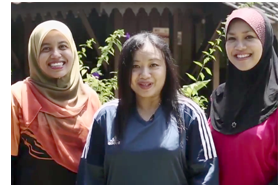 Have you ever wondered how marathon runners get the energy for completing a 26.2-mile course? Do you know what is meant by the terms “carbo-loading” and “hitting the wall”? The concepts covered in this lesson involve the expenditure of energy from nutrition and cellular respiration, with a particular focus on the strenuous energy demands of marathon running. The scene is a group of three novice runners preparing to run a marathon. Students will learn that muscles use the stored chemical energy of food, converting it to heat and kinetic energy. The source of this energy used to power working muscles is adenosine triphosphate (ATP) - the body’s biochemical way to store and transport energy. This lesson was created by three high school biology teachers from Malaysia: Norliza Bt M.Yusof, Mardiana Bt Yusof, Airin Bt Abu Bakar. Watch lesson here. Have you ever wondered how marathon runners get the energy for completing a 26.2-mile course? Do you know what is meant by the terms “carbo-loading” and “hitting the wall”? The concepts covered in this lesson involve the expenditure of energy from nutrition and cellular respiration, with a particular focus on the strenuous energy demands of marathon running. The scene is a group of three novice runners preparing to run a marathon. Students will learn that muscles use the stored chemical energy of food, converting it to heat and kinetic energy. The source of this energy used to power working muscles is adenosine triphosphate (ATP) - the body’s biochemical way to store and transport energy. This lesson was created by three high school biology teachers from Malaysia: Norliza Bt M.Yusof, Mardiana Bt Yusof, Airin Bt Abu Bakar. Watch lesson here.
 In late March, MIT BLOSSOMS spent twelve days meeting with educators in both Beijing and Chonqing, China. While in Beijing, staff participated in a BLOSSOMS-focused conference at the School of Education of Peking University. (See accompanying photo) Attending the conference were math and science teachers from high schools in Beijing, as well as educators from Peking University. In addition, several high school teachers traveled from outside Beijing to attend. While in Beijing, BLOSSOMS staff also toured a number of elite public high schools in the capital city. In Chongqing, BLOSSOMS visited its partnering high school, the Verakin School, and held workshops with both teachers and students. These workshops focused on methods for teaching critical thinking skills—with strong emphasis on the importance of active and inquiry-based learning. Over the coming year, BLOSSOMS will continue working with Verakin teachers, and other Chongqing high school teachers, to adopt these new classroom strategies in their every day teaching. In late March, MIT BLOSSOMS spent twelve days meeting with educators in both Beijing and Chonqing, China. While in Beijing, staff participated in a BLOSSOMS-focused conference at the School of Education of Peking University. (See accompanying photo) Attending the conference were math and science teachers from high schools in Beijing, as well as educators from Peking University. In addition, several high school teachers traveled from outside Beijing to attend. While in Beijing, BLOSSOMS staff also toured a number of elite public high schools in the capital city. In Chongqing, BLOSSOMS visited its partnering high school, the Verakin School, and held workshops with both teachers and students. These workshops focused on methods for teaching critical thinking skills—with strong emphasis on the importance of active and inquiry-based learning. Over the coming year, BLOSSOMS will continue working with Verakin teachers, and other Chongqing high school teachers, to adopt these new classroom strategies in their every day teaching.
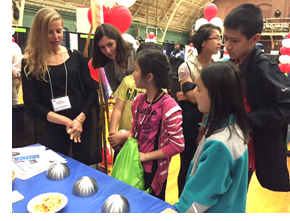 On Saturday April 23, MIT held a campus-wide Open House—called “Under the Dome”—probably the largest open house in the history of the Institute. This was part of MIT’s 100-year celebration of moving across the Charles River from its original location in Boston to its current location in Cambridge. Sources estimate that 40,000 visitors toured MIT that day! Hundreds of people came by the BLOSSOMS booth, mostly parents with their children, many wanting to become MIT students (after they graduate from high school, of course!). Others who stopped by included high school teachers and MIT students. Our Team-of-Five answered many questions, showed representative BLOSSOMS lessons, and—most popular—played the Monte Hall 3-door game every 30 minutes! The young people loved it, and we had four winners! On Saturday April 23, MIT held a campus-wide Open House—called “Under the Dome”—probably the largest open house in the history of the Institute. This was part of MIT’s 100-year celebration of moving across the Charles River from its original location in Boston to its current location in Cambridge. Sources estimate that 40,000 visitors toured MIT that day! Hundreds of people came by the BLOSSOMS booth, mostly parents with their children, many wanting to become MIT students (after they graduate from high school, of course!). Others who stopped by included high school teachers and MIT students. Our Team-of-Five answered many questions, showed representative BLOSSOMS lessons, and—most popular—played the Monte Hall 3-door game every 30 minutes! The young people loved it, and we had four winners!
|
|
|
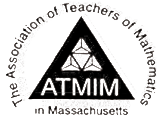 On March 19th, Professor Dan Frey, Co-Principal Investigator of BLOSSOMS, presented at the Spring Conference of the Association of Teachers of Mathematics in Massachusetts. The theme of the conference was “Reaching All Learners,” and Professor Frey’s presentation was entitled “Use of Video in an Active Learning Context: The BLOSSOMS Pedagogy.” On March 19th, Professor Dan Frey, Co-Principal Investigator of BLOSSOMS, presented at the Spring Conference of the Association of Teachers of Mathematics in Massachusetts. The theme of the conference was “Reaching All Learners,” and Professor Frey’s presentation was entitled “Use of Video in an Active Learning Context: The BLOSSOMS Pedagogy.”
|
|
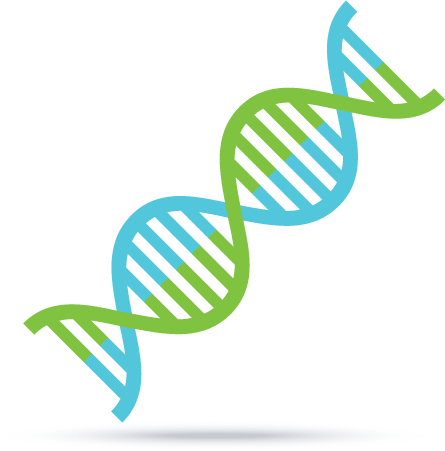 DNA and RNA nucleotides models patented by MIT are now being mass produced, and worldwide distribution has begun. In addition, amino acids and tRNA models will become available in summer 2016. Taken together, these models give students the opportunity to produce proteins from the DNA instructions, simulating the multi-step process of protein synthesis. Read more here. DNA and RNA nucleotides models patented by MIT are now being mass produced, and worldwide distribution has begun. In addition, amino acids and tRNA models will become available in summer 2016. Taken together, these models give students the opportunity to produce proteins from the DNA instructions, simulating the multi-step process of protein synthesis. Read more here.
|
|
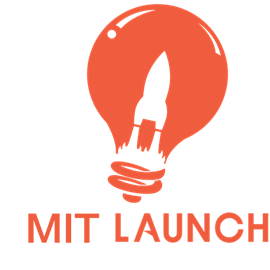 The MIT Launch Program believes that entrepreneurship CAN be taught. The program guides students all the way from coming up with ideas, through market research and prototyping, to a final pitch. Throughout this process, students learn integrated and proven methods for entrepreneurial success, plus receive mentorship and professional skills development while undertaking the hands-on projects. Read more here. The MIT Launch Program believes that entrepreneurship CAN be taught. The program guides students all the way from coming up with ideas, through market research and prototyping, to a final pitch. Throughout this process, students learn integrated and proven methods for entrepreneurial success, plus receive mentorship and professional skills development while undertaking the hands-on projects. Read more here.
|
|
|